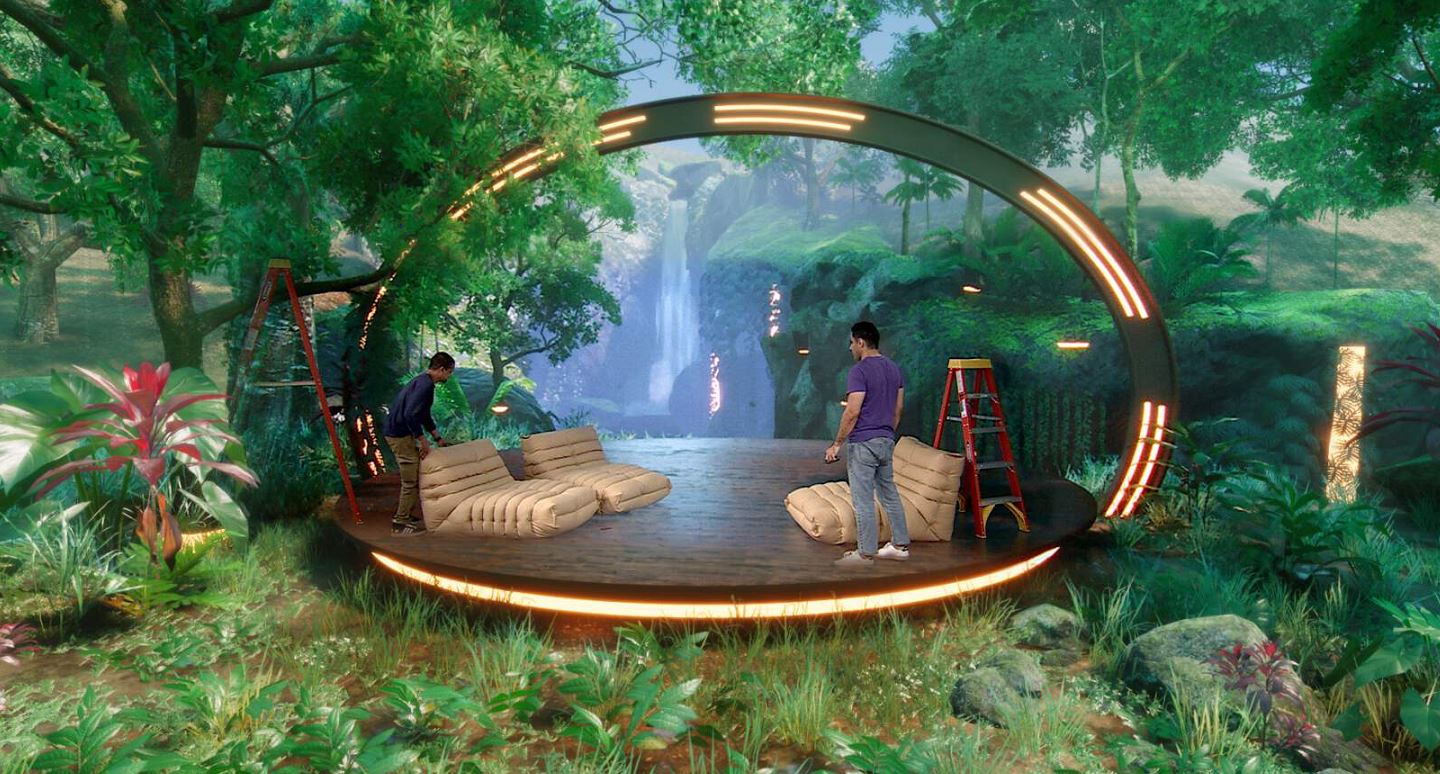We are in the midst of a huge period of change as several pioneering new technologies reshape the way that content is produced and consumed ,writes Chris Black, global head of brand and communications at Vizrt.
As media continues to evolve, it’s clear that the tools we use to tell stories must also change. Virtual production and extended reality (XR) are leading this transformation, offering broadcasters and content creators new ways to engage their audiences. These technologies, along with AI and automation, are reshaping how we produce and consume content, creating immersive experiences that help audiences connect with stories on a deeper level. More importantly, they are no longer reserved for major networks as smaller broadcasters and independent creators can now leverage these powerful tools as well.
Virtual production: unlocking new dimensions in storytelling
Virtual production offers a level of creative freedom that transforms how we present complex stories. For example, when covering data-heavy events like elections or significant natural disasters, traditional footage often doesn’t do justice to the complexity of the situation. By integrating virtual sets or augmented reality (AR), we can provide more detailed visualisations that help audiences understand these events better.
Virtual production makes it possible to not just broadcast results, but to enhance the entire experience, providing viewers with in-depth insights, as seen in the immersive, AR-powered Downing Street experience created by Sky News. The most exciting part? These tools are no longer exclusive to large broadcasters. Solutions like Viz Virtual Studio Go make virtual production affordable and accessible for smaller broadcasters and independent creators. Now, with a single system, anyone can create professional-quality virtual sets and AR environments, levelling the playing field for all content creators.
XR: enhancing viewer engagement
Extended reality (XR), which is often a mix of video walls and augmented/virtual reality, has become a critical tool for broadcasters who want to engage audiences in innovative ways. By merging the real world with virtual elements, XR allows presenters to interact directly with data, creating a more immersive and dynamic experience. Whether it’s election coverage or explaining scientific phenomena, XR gives broadcasters the ability to present information in a way that feels more personal and interactive.
For example, during India’s 2024 elections, broadcasters used Viz Engine 5 to deliver striking live graphics and AR-led virtual studios, bringing viewers closer to the world’s largest democratic election. Similarly, RTVE’s immersive XR approach for the European elections allowed them to virtually place presenters in iconic locations like the European Parliament, making the elections coverage far more engaging for their audience.
Making innovative tools accessible
One of the biggest shifts we’ve seen in recent years is the democratisation of production tools. No longer are high-end graphics engines and virtual sets limited to the major players. Tools like HTML5 graphics and cloud-based services have made it easier than ever for smaller content creators to produce polished, professional content without needing an enormous budget.
For content creators running YouTube channels or small-scale broadcasts, tools like HTML5 graphics provide an accessible way to enhance storytelling. These cloud-based solutions offer powerful capabilities at a fraction of the cost, allowing anyone to integrate live data into their broadcasts. For instance, broadcaster TBC in South Korea successfully used Viz Flowics to manage real-time election data, creating engaging visuals without advanced coding skills or external graphic design support, all while saving costs.
AI and automation: the next frontier
While virtual production and XR have already changed the way we tell stories, the next big wave of transformation is coming through AI and automation. These technologies are simplifying complex production processes, making it easier for individuals and smaller teams to produce high-quality live broadcasts and virtual environments.
Generative AI is already being used to create virtual backdrops, allowing creators to quickly generate environments that match their narratives. Automation is taking over the more repetitive tasks, freeing up time for content creators to focus on storytelling rather than technical details. Soon, we’ll see more AI tools seamlessly integrating into live production workflows, enhancing both the speed and quality of content creation.
However, while AI and automation are incredibly powerful, they still require a creative touch. You still need that artistic eye to bring everything together, ensuring that the tools enhance your story rather than overshadow it. AI can assist, but the vision must always come from the storyteller.
Maintaining trust in a virtual age
One of the challenges we face as we embrace virtual production and XR is maintaining trust with our audiences. In a world where misinformation can spread rapidly, ensuring the authenticity of virtual content is crucial. Audiences trust the brands they follow, and part of that trust comes from knowing the stories are accurate and credible.
This is where technology can help. Tools like C2PA ensure that the images and footage used in virtual productions are authentic, allowing broadcasters to verify the source and integrity of the content they’re presenting and giving audiences at home the verification that the content they are seeing is real and correctly attributed to the story. As we continue to rely on virtual elements to tell stories, being transparent about how we create and verify those stories will be essential to maintaining that trust.
The future of storytelling is virtual
Virtual production and XR are not just trends; they are the future of storytelling. These technologies offer endless possibilities for broadcasters and content creators to push the boundaries of traditional media. As these tools become more accessible, we will continue to see new and innovative uses that engage audiences in ways we haven’t yet imagined.
With AI, automation and affordable virtual tools driving this next wave of innovation, the future of storytelling is more dynamic, immersive, and inclusive than ever before.





